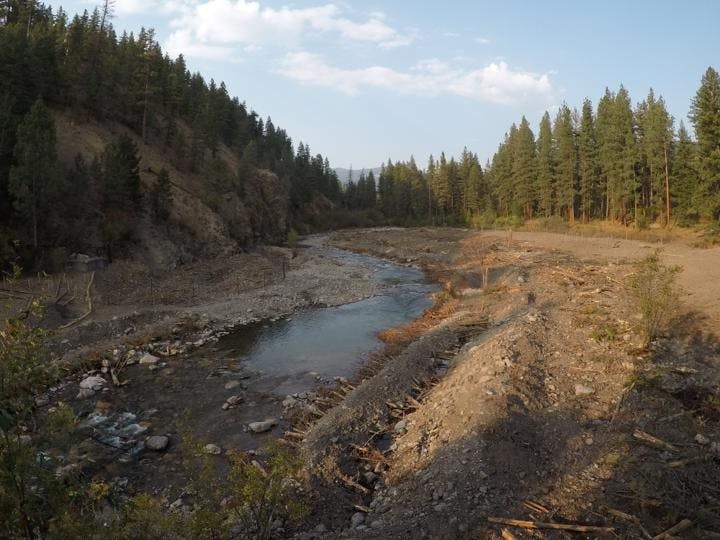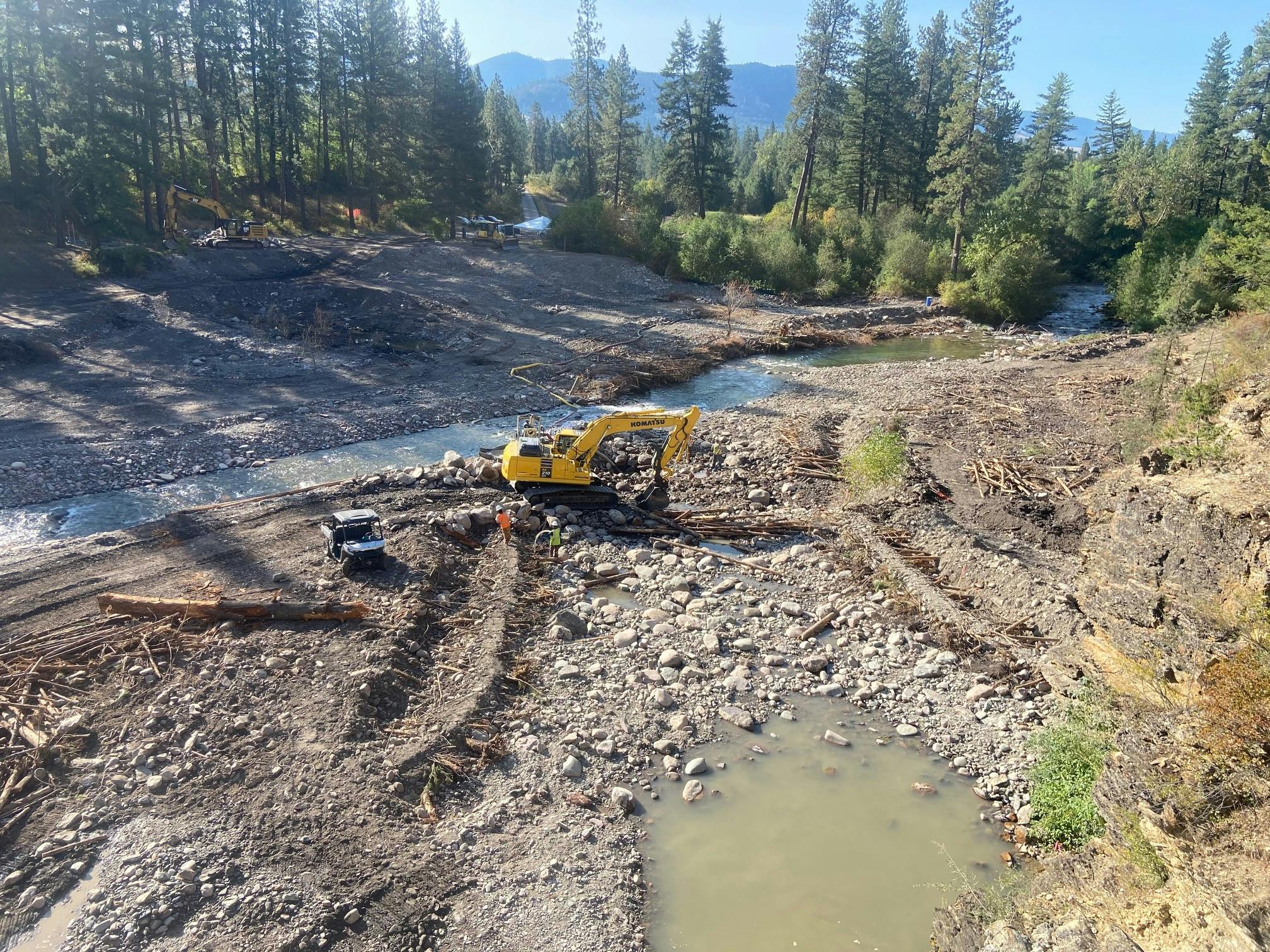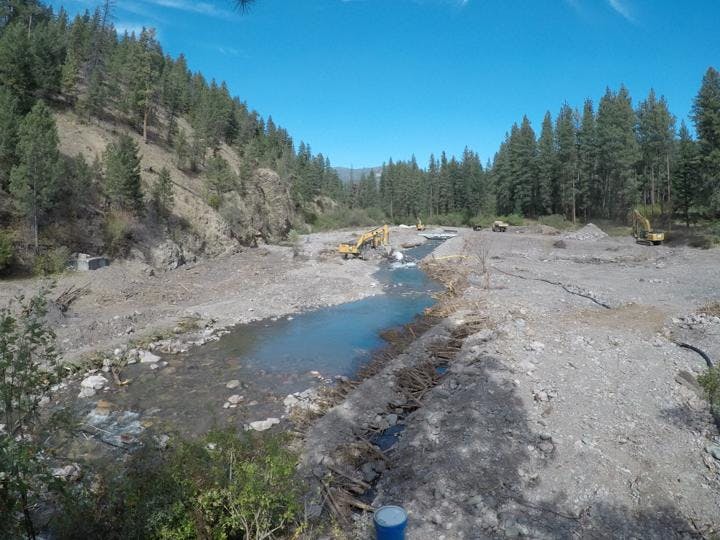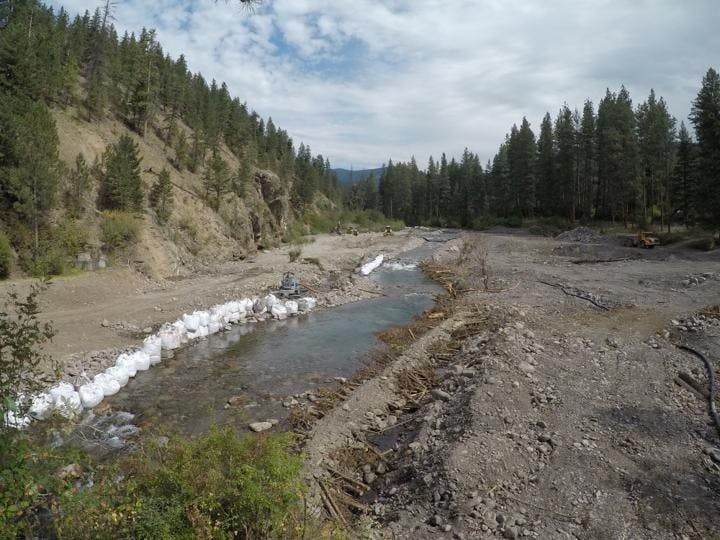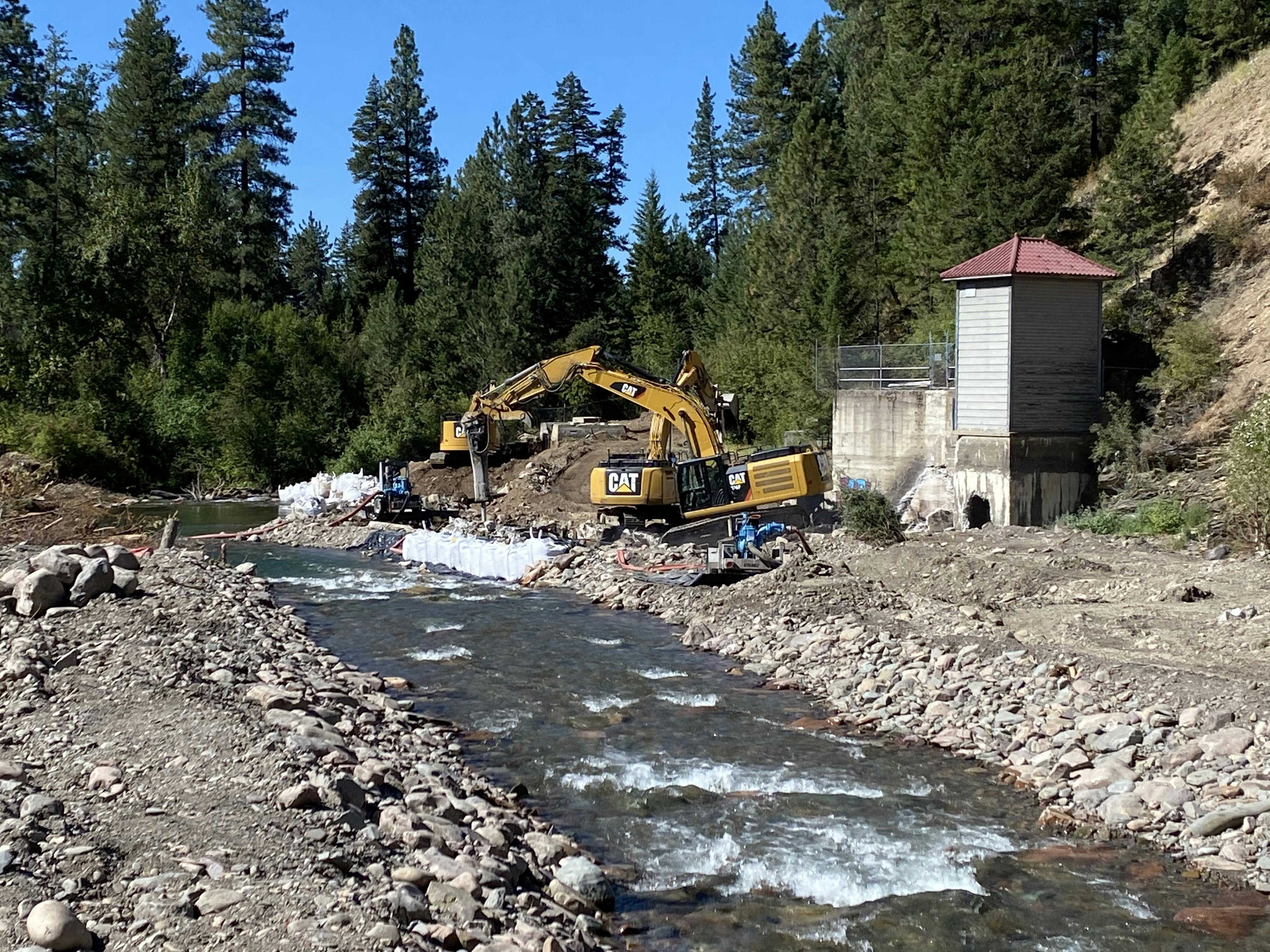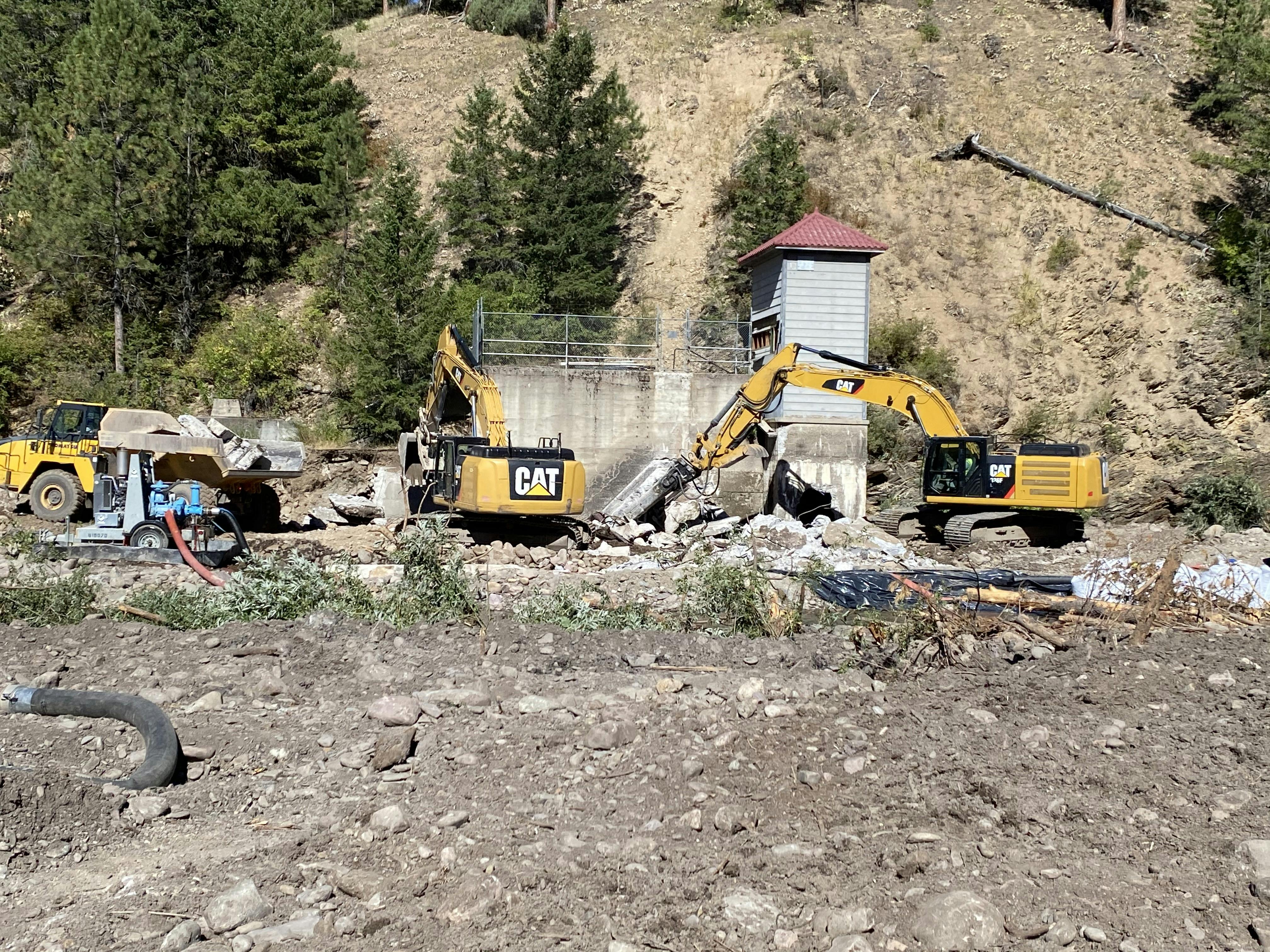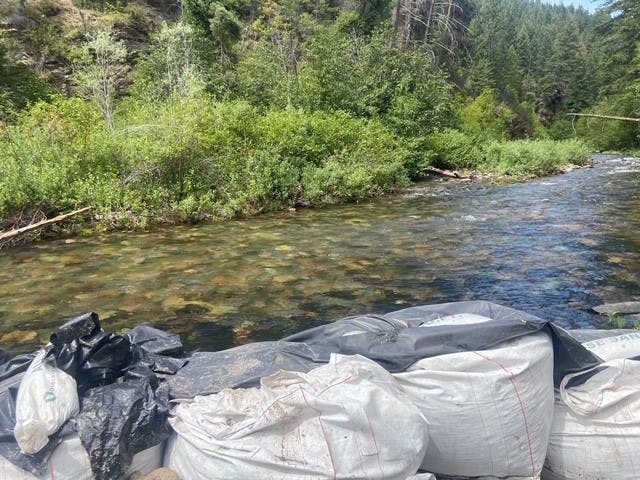Rattlesnake Dam Removal Project
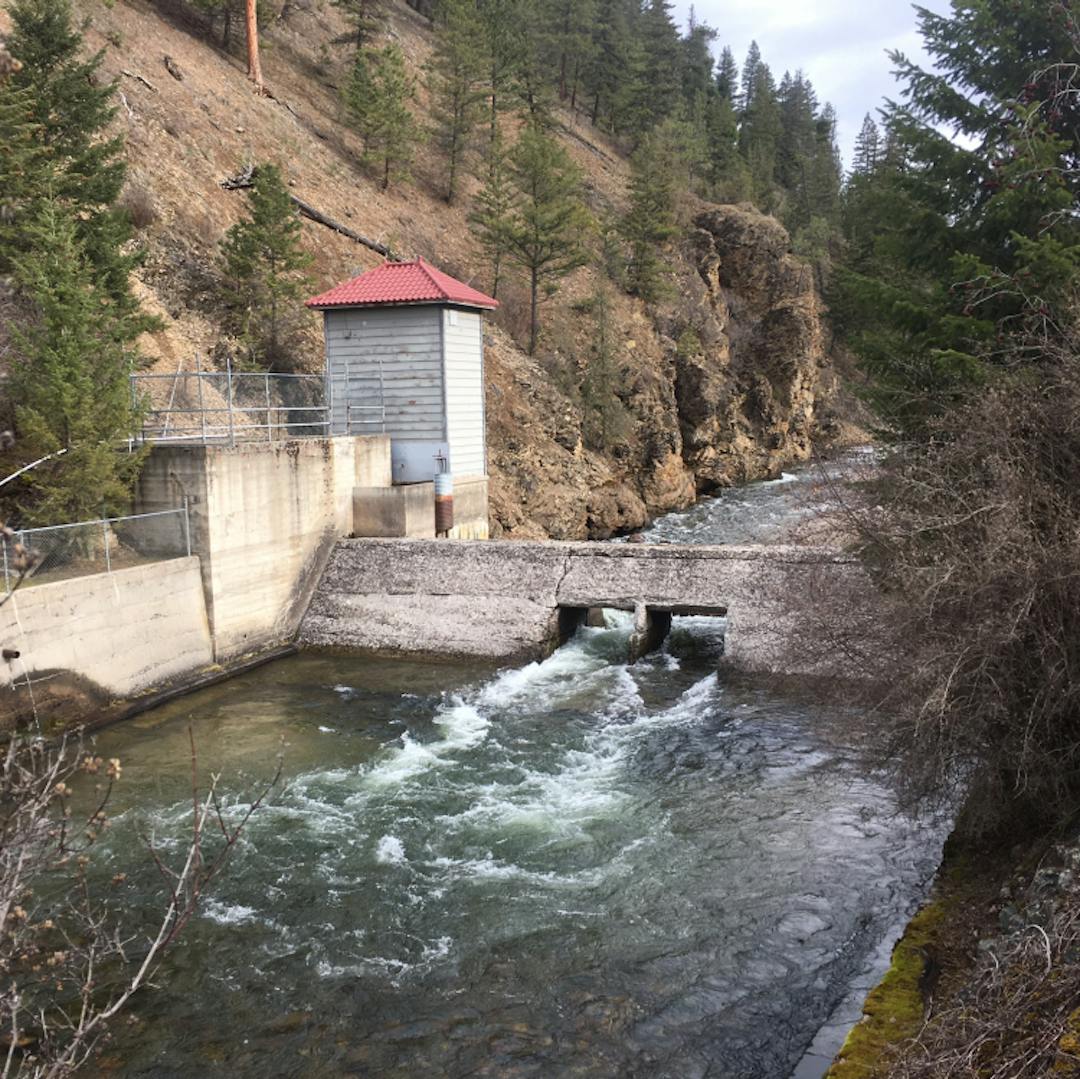
Kudos!
This successful project has been receiving a lot of attention lately—on both a national level as well as within Montana.
The Federal Emergency Management Agency (FEMA) chose this project as one of its Hazard Mitigation Assistance Division's 2020 Mitigation Success Stories in an article entitled, "FEMA Helps Fund Dam Removal as Part of Innovative Public-Private Partnership." The article is on page 24 of the FEMA report.
The dam removal project is also part of a PBS documentary by the University of Montana's Department of Journalism about challenges faced by Montana fly fishing outfitters during the COVID-19 pandemic entitled, "Weathering the Storm." The video shows the importance of projects like this one in ensuring a thriving fish population, which is essential not only to Montana's economy but also to its way of life.
Project Update—Summer 2021
Our work at the restoration site this summer will focus on maintaining and monitoring the site by weeding, watering, and performing any other tasks needed to keep the planted and seeded vegetation alive and thriving. We are also surveying for birds, amphibians, and reptiles to document the recovery of wildlife to the area. We will likely do some additional planting this fall, so watch for volunteer opportunities in September if you would like to help.
Work on the trails and informational kiosks will begin in 2022. Click here for more information about on-site fencing and vegetation as well as an access map.
 Spotted sandpiper nest in restored floodplain. Photo by Rob Roberts
Spotted sandpiper nest in restored floodplain. Photo by Rob Roberts
 Blooming Clarkia from our seed mix. Photo by Tyler Eisenhand
Blooming Clarkia from our seed mix. Photo by Tyler Eisenhand
 Western toad tadpoles in the constructed wetlands. Photo by Clancy Jandreau
Western toad tadpoles in the constructed wetlands. Photo by Clancy Jandreau
Project Update—Winter 2020-21
Further revegetation work will begin in the spring when weather allows, and construction of the informational kiosk and trail will begin afterward in the summer of 2021.
Project Update—Week of September 21, 2020
Revegetation work begins.
Project Update—July 29, 2020
The Rattlesnake Dam Removal Project has been underway for several weeks, and we are making good progress at the site. Project contractor Aqua Terra Restoration, LLC has completed a large amount of the earthwork, including filling the former reservoir and preparing to dewater Rattlesnake Creek. This involves routing water through a bypass channel that will isolate the dam and other infrastructure and allow for removal. We expect dam demolition to begin in early August.
Our efforts to minimize turbidity and impacts to Rattlesnake Creek and aquatic life are robust and documented in our project plans and permits for these activities. These strategies include use of the bypass channel, coffer dams to isolate the creek, dewatering pump stations, filtration areas, sediment best management practices (BMPs), fish salvage, spill and leak control protocol, and well thought out construction sequencing. All of our permits are housed on site in a designated box near the project trailer. We are doing everything we can to have only short-term and minimal impacts to the stream. However, there will be times when the creek will be discolored, including the next few days as we activate the bypass channel. In all, these are short-term, small impacts for long-term, big gains for the creek and fisheries.
Background
The Rattlesnake Dam mitigation and restoration project will remove the dam and reestablish a natural river connection between the Rattlesnake Wilderness at the headwaters and the Clark Fork River for the first time in more than 100 years. The project will take place through the summer and fall of 2020 and result in removal of all manmade structures, 1,000 feet of stream channel restoration, and 5 acres of wetland and floodplain creation.
To tackle a project this large, the City and Missoula Water formed a partnership with external organizations, such as Trout Unlimited, the Watershed Education Network, and the Montana Department of Fish, Wildlife and Parks. The partners have collaborated since 2017 to prepare the dam for its removal, and the public-private partnership successfully applied for several grants, receiving substantial funding from the Montana Department of Natural Resources and Conservation's (DNRC) Renewable Resource Grand and Loan Program, the Federal Emergency Management Agency's (FEMA) Hazard Mitigation Grant Program, and the Open Rivers Fund, a program of the Resources Legacy Fund supported by the William and Flora Hewlett Foundation.
| Other Sources | |
| Trout Unlimited | $ 45,000 |
| Hewlett Open River Fund | $ 300,000 |
| Montana Future Fisheries Grant | $ 50,000 |
| Missoula Conservation District | $ 50,000 |
| Patagonia | $ 25,000 |
| Conservation Alliance | $ 40,000 |
| Local Businesses | $ 35,000 |
| Total Other | $ 545,000 |
Visit Site Overlook
Residents can visit the project overlook by taking a short walk or bike ride on the Rattlesnake Greenway. The dam site and overlook are about .8-mile from the trailhead at the north end of Duncan Dr.
Can't make it to the site in person? Track the project's progress virtually—a web camera snaps a photo every 30 minutes.
Project Benefits
Rattlesnake Creek is one of the major sources of trout for the Clark Fork River and a highly popular recreation area for the public. The project includes new trail connections and public access points, and will reconnect 10 miles of habitat for fish and wildlife. Dam removal will be completed in 2020 and the site is expected to be fully restored in 2021.
- Restore habitat for native and threatened fish species and wildlife.
- Enhance the recreational corridor between Missoula urban area and Rattlesnake Wilderness.
- Re-naturalize site to improve stream, floodplain and riparian benefits.
- Minimize or eliminate safety and liability hazards on site.
- Reduce maintenance and operation costs to Missoula Water.
Built in 1904, Rattlesnake Creek Dam played an integral part of Missoula’s water supply until 1983. The City of Missoula acquired the deteriorating dam, along with 10 dams on lakes in the Rattlesnake Wilderness, through the 2017 acquisition of the former Mountain Water Company. But at more than a century old, the dam is no longer in use and is a potential hazard to its environment and local community.
Ask us a question
We'll do our best to answer your question within five business days.






